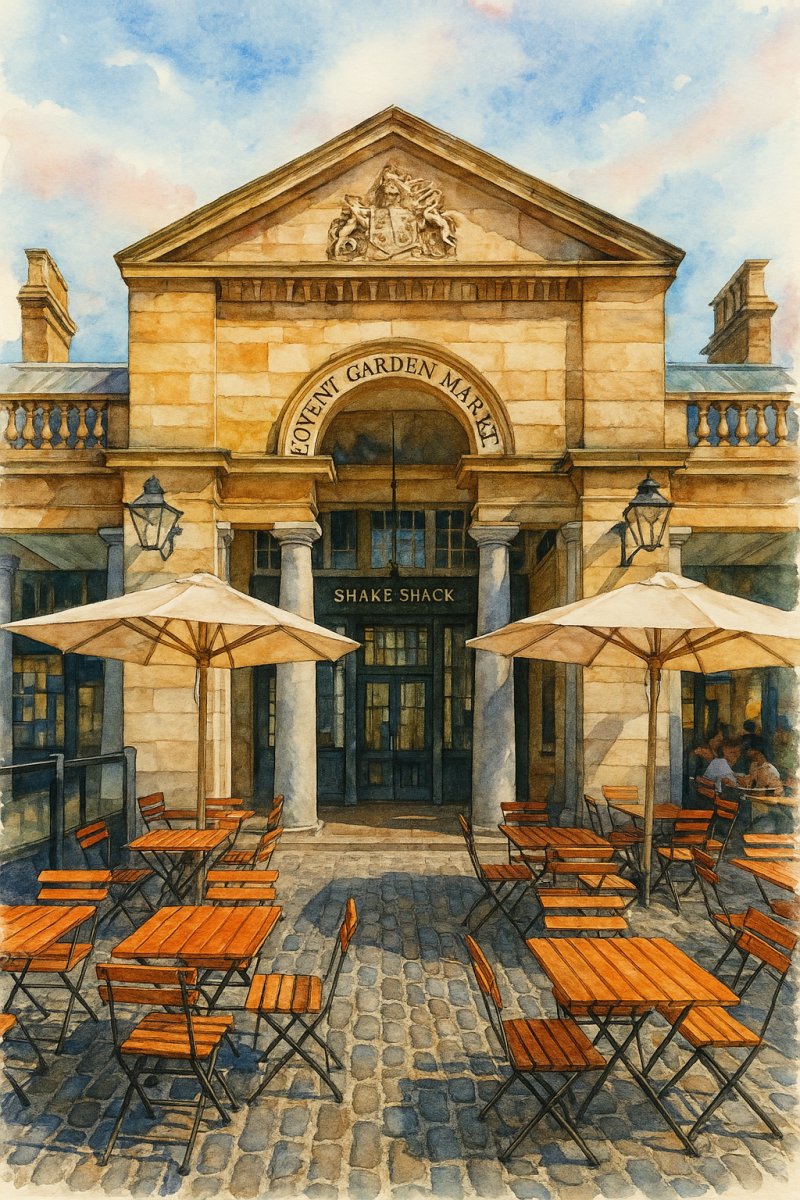
Covent Garden, London: A Cultural Heart with Historic Charm
Where is Covent Garden?
Covent Garden is a district located primarily within the City of Westminster, though a small portion of its eastern fringe crosses into the London Borough of Camden. It lies on the eastern edge of the West End, just west of Drury Lane and north of the Strand. It is surrounded by several well-known London neighbourhoods:- To the west is Leicester Square and Soho
- To the south lies the Strand and the Thames Embankment
- To the north is Bloomsbury
- To the east is Holborn
Size, Population, and Affluence
Covent Garden covers a relatively compact area of just under 0.2 square miles (around 0.5 square kilometres). Due to its central location and commercial nature, the resident population is relatively small, estimated at around 1,000 to 2,000 people. Most of the buildings are either retail, hospitality-related, or cultural institutions, with a limited number of residential properties, especially in the heart of the district.The per capita income in Covent Garden is well above the London average, reflecting the area's status as a high-end destination. While not dominated by government buildings (as in nearby Whitehall), the area's high commercial density and tourism-based economy contribute to the low residential numbers.
Map of Covent Garden, London
A Brief History of Covent Garden
Covent Garden has its roots in the early 13th century, when it was the "Convent Garden" of Westminster Abbey - a plot of land used to grow fruits and vegetables for the monks.In the 17th century, the area underwent a major transformation. The 4th Earl of Bedford, Francis Russell, commissioned Inigo Jones to design a new residential square in the Italian style, making Covent Garden the first modern square in London. The elegant piazza, completed in the 1630s, became a fashionable residential area.
By the 18th century, the district became famous for its fruit and vegetable market, which operated for over 300 years and gave the area its lasting identity. Though the wholesale market moved to Nine Elms in 1974, the central market buildings remain and have been repurposed into a thriving shopping and entertainment hub.

Painting of Covent Garden (View full-size image here)
What's in a Name?
The name "Covent Garden" comes from the Middle English term "covent", meaning convent. It was originally known as the "Convent Garden" of Westminster Abbey. Over time, the name was shortened to Covent Garden.Pronunciation: Covent is pronounced "Cov-ent"
 , not "Co-vent" (rhyming with "oven", not "event"). Although the spelling suggests a soft "o", the proper British pronunciation drops the second vowel.
, not "Co-vent" (rhyming with "oven", not "event"). Although the spelling suggests a soft "o", the proper British pronunciation drops the second vowel.
The Character of Covent Garden
Covent Garden today is a vibrant commercial and cultural district, known for its mix of retail, dining, theatre, and street entertainment. Residential properties exist mostly on the quieter side streets and upper storeys of buildings, but the area is largely driven by tourism and the creative industries.It is considered an affluent area, home to designer boutiques, high-end restaurants, and world-class theatres. It draws both international visitors and Londoners looking for culture, fashion, and food in one compact, walkable neighbourhood.
Major Roads in the Area
Several significant roads and thoroughfares frame and criss-cross Covent Garden, including:- Long Acre - A main east-west road through the district, lined with shops and cafes
- The Strand - Running along the southern edge of Covent Garden, connecting the area to the City and Westminster
- Drury Lane - A historic north-south street on the eastern side
- Bow Street - Home to the former Bow Street Magistrates' Court and Police Station
- Floral Street - Known for fashion boutiques and the back entrance to the Royal Opera House
Major Sights and Attractions
Covent Garden is packed with sights that appeal to a wide variety of interests. Some of the most iconic include:- Covent Garden Market - A covered market filled with artisan goods, fashion, and cafes
- The Royal Opera House - A world-famous venue for opera and ballet performances
- London Transport Museum - Located in the old flower market building, it's a favourite for families and history buffs
- St. Paul's Church (The Actor's Church) - A historic church on the piazza known for its theatrical connections
- Jubilee Market - A lively market hall that hosts antiques, crafts, and general goods
Nearest London Underground Stations
Covent Garden is well-connected by the London Underground:- Covent Garden Station - On the Piccadilly Line, right in the heart of the district
- Leicester Square - Served by the Piccadilly and Northern lines, a short walk to the west
- Holborn - On the Central and Piccadilly lines, northeast of Covent Garden
- Charing Cross - Served by the Bakerloo and Northern lines, and a National Rail station
Fun Fact: The Elevators Are for Emergencies Only!
Covent Garden Underground Station is famous for something peculiar - it doesn't have escalators, only lifts and a spiral staircase of 193 steps (the equivalent of a 15-storey building!). Tourists unaware of this sometimes take the stairs and get a workout they didn't expect!Additionally, the Royal Opera House has its own beehives on the roof! The honey is harvested and occasionally used in the venue's restaurants.